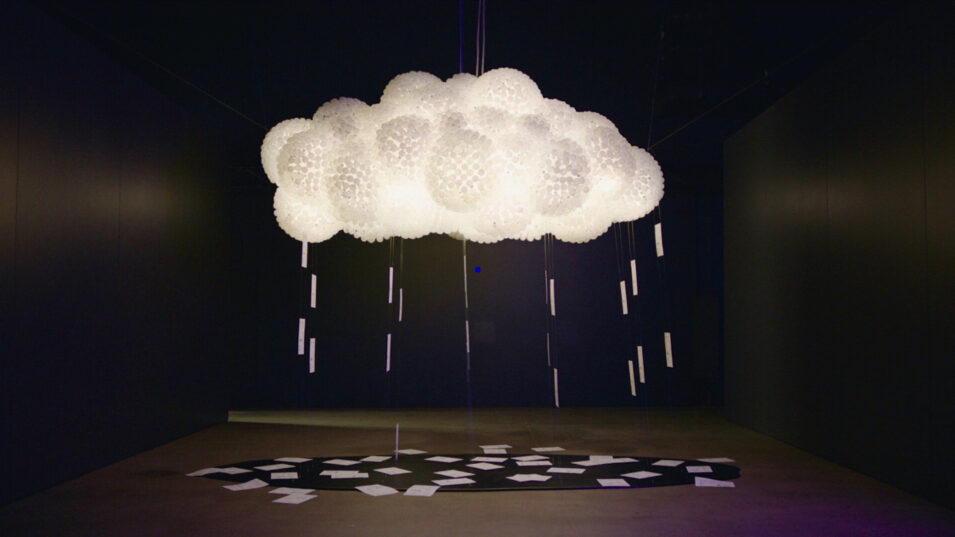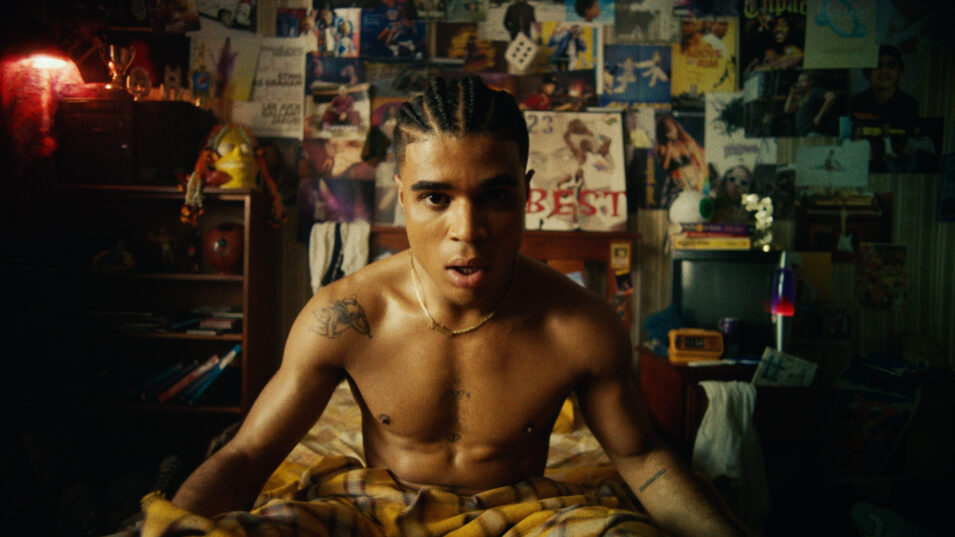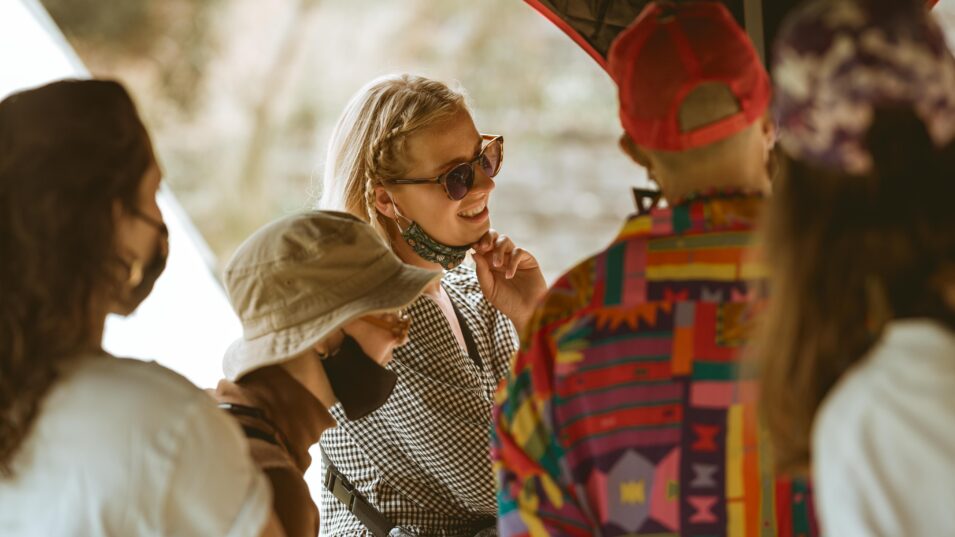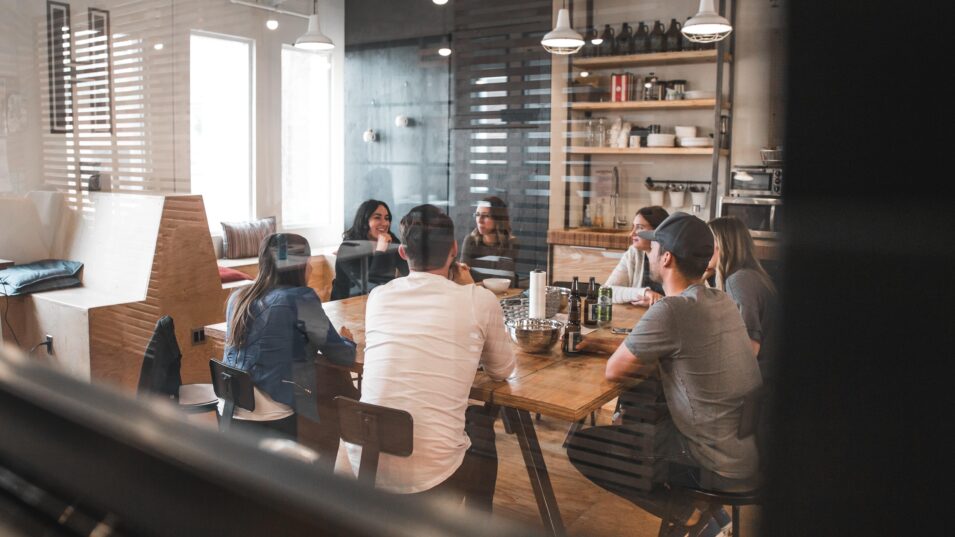When we heard the news that Heartbreak High – Netflix’s reimagining of the nostalgic Aussie 90’s series of the same name – was being renewed for a second season, we weren’t surprised. Since debuting on the platform in September, Heartbreak High struck an undeniable cord with audiences, remaining in the Netflix Australian top 10 every week, climbing the ranks to number 2, and reaching the top 10 in 43 countries. Coupled with a solid 100% Rotten Tomatoes score from critics, a 90 percent score from audiences, and a staggering social media following spanning the globe – a second season was pretty much written in the stars.
At Crews, in addition to its clever storytelling and wonderfully diverse and talented cast, what really captured our attention was the look and feel of the series. Heartbreak High has a glossy, polished cinema feel that sets it apart from all the other Aussie dramas that have graced our TV sets before. We jumped at the opportunity to sit down with one of the creative masterminds behind the show – award-winning Cinematographer and Crew’s member Drew English – to chat all things Heartbreak High, his career trajectory, and creative process.
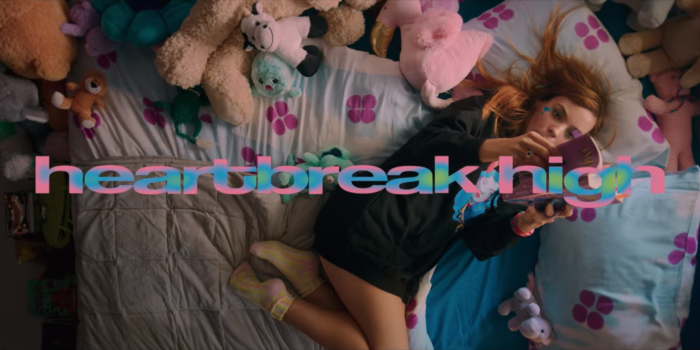
Skilled in all aspects of cinematography, Drew English has an innate attention to detail, a strong eye for creative design and a dedication to his craft that’s become well-known within the film industry. But where did his love of working behind the lens begin? After completing a diploma in film and TV production in 2005, English worked as a camera assistant for 15 years, clocking up experience on major films like Wolverine, Australia and The Sapphires. While he credits much of his early learnings to this time working alongside some of the most talented filmmakers in the world – English had his sights set on transitioning into cinematography, and it was clear when the time had come to take that leap. “I always knew cinematography was the end goal. You can get caught up in being a camera assistant and paying the bills, but I knew I had to bite the bullet and throw myself into shooting.”
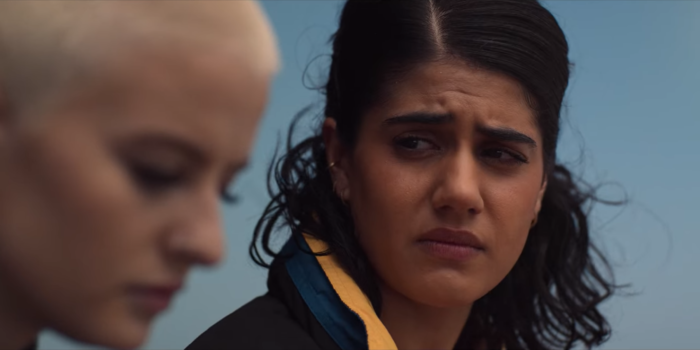
English began shooting whatever he could get his hands on, from music clips for his mate’s bands to short films and videos for his wife’s clothing label. His first foray into long-form came via the opportunity to work with mates Dylan River and Tyson Perkins on SBS’s multi-award winning series Robbie Hood, a short series based on thirteen-year-old Robbie, a troublemaker with a heart of gold who’s famous for wreaking havoc in Alice Springs. Robbie Hood ended up proving so successful that SBS cut it into an hour-long video for broadcast, and it eventually went on to win the AACTA award for best web series.
“When I first heard about it, I wasn’t sure if I wanted to dive straight into another school-aged show, but when they sent me the scripts I was like ‘yep, this is epic!’. And then when I found out who the directors were – Gracie Otto, Neil Sharma, Adam Murfet and Jessie Oldfield – these are all the great young gun directors I want to be working with – so it was a no-brainer.”
English’s big TV break came via Alice Willison, who was producing The PM’s Daughter, the ABC’s teenage political comedy drama. “Alice reached out and said she loved my stuff and was willing to give me the shot. The ABC was super happy with the results and said it was the best-looking kids show they had ever had, which was great – I was pretty nervous shooting my first long-form, especially because I was shooting all 10 episodes of the series. But I was confident I could do something special.”
From here, the producers of Heartbreak High came calling. “When I first heard about it, I wasn’t sure if I wanted to dive straight into another school-aged show, but when they sent me the scripts I was like ‘yep, this is epic!’. And then when I found out who the directors were – Gracie Otto, Neil Sharma, Adam Murfet and Jessie Oldfield – these are all the great young gun directors I want to be working with – so it was a no-brainer.”
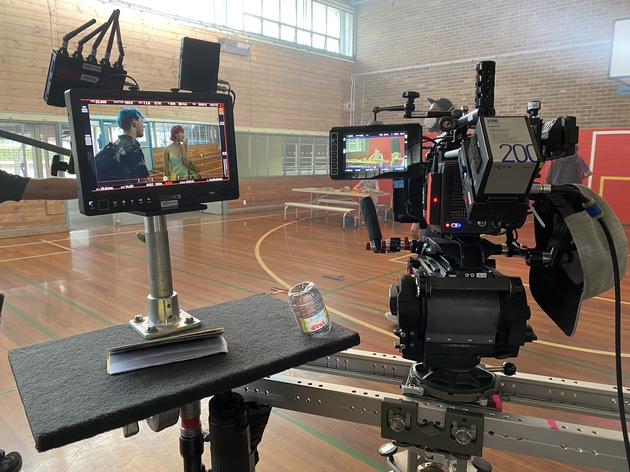
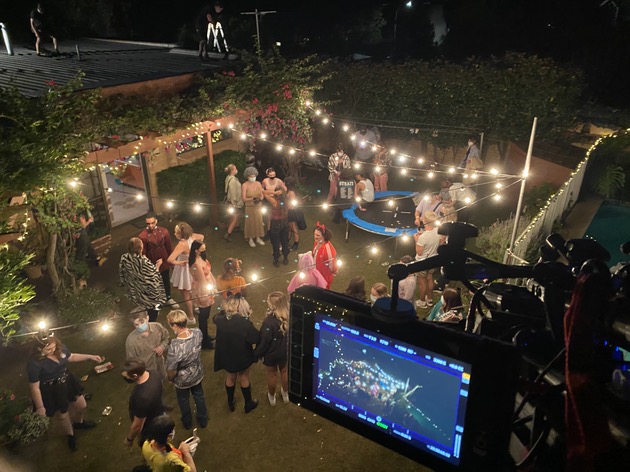
And with so much talent at the helm, it’s no wonder Heartbreak High, from a storytelling perspective, hits different. “I think it’s really special for the climate. It’s an important story to tell. It’s fresh and different from anything Australia’s ever done – it’s all-inclusive, culturally and sexually, I just found that cool right from reading the first scripts. I think that’s the biggest thing for me, it was important to get it out there and important that we’re telling these sorts of stories now in our modern age.”
“One of the big things [I’ve learnt] is when you don’t have time on set, you need a lot of time in pre-production. Just lock yourself in the room with the director and read through scripts and pick them apart – because that’s when you get the time to think about cool ideas, you just don’t get the time to have those conversations on a TV set.”
Though bringing these stories to the screen didn’t come without its challenges, thanks to the chaotic nature of shooting in the midst of a global pandemic. “We were shooting during Covid, and we were really struggling to find and keep locations. So you’re trying to block and storyboard based on hypothetical locations which were changing all the time.” English and the crew were able to sail through these issues thanks to some dedicated planning in pre-production. “I learned a lot on The PM’s Daughter and one of the big things was when you don’t have time on set, you need a lot of time in pre-production. Just lock yourself in the room with the director and read through scripts and pick them apart – because that’s when you get the time to think about cool ideas, you just don’t get the time to have those conversations on a TV set. At times it’s like you’ve only got an hour so you quickly bang some lights up and try to make it work, so it’s important to spend that time in pre-pro talking things through and trying to shot list as tightly as you can. So as much as we could, we’d lock ourselves away, read through the scripts and throw ideas around and then just try to make them work. It was challenging, but it was definitely where the best ideas came from.”

In terms of the overall look and feel of the series: “we wanted to lean into that not-so-bright, cinematic feel, or basically stay as far removed from old school TV as we could. We weren’t scared to go dark if it felt like it needed to, luckily Netflix supported us on that.” And as for those incredible Steadicam shots? “That was Tim Walsh. I was lucky to have him as my right hand, my Steadicam operator. He’s a good mate of mine and I keep him as my A-cam operator as well because I know I can really lean on him – he’s the best. Timmy is also a master of coverage and sometimes it can really save your butt.”
When it comes to dreaming up creative ideas and pulling references for the show, while Heartbreak High has been dubbed as ‘serving Sex Education and Euphoria vibes’ by fans – as English says, inspiration can come from anywhere. “We use a lot of references, but they’re often ‘remember this shot from jaws? ‘ or ‘you know that shot in Goodfellas and they did that stacked thing – let’s do something like that.’ With Euphoria, that was so beautifully shot and some ideas definitely came out of that, but sometimes ideas just pop into your head from anywhere. And then when you come to work and you’re talking about the script, you’ve got photos on your phone, and we’re pulling references from kind of everywhere.”

As for English’s favourite scenes, they involve a couple of *SPOILER ALERTS* so skip the next few paragraphs if you haven’t watched the show yet. “I really enjoyed Harper’s escape from the eshays scene. We found this beautiful old petrol station and when Gracie and I saw it we were like, ‘this is the place!’. For this scene, we had plenty of time to light – and all those fluros that you see flickering, that was a full replacement. I got to really spend a bit of time getting it exactly where I wanted it and really build in that mood and that eeriness.”
“And then the subsequent chase after that, which was tough to pull off. I’m glad it worked because I basically couldn’t see what I was doing. It was pouring with rain, we were traipsing through mud and it was at the end of a massive day. Then that shot you see of Harper and she’s covering her mouth in the bushes – they were trying to make us wrap and I just knew I needed this shot so I buried myself in the bushes and asked Ash to jump back in, and to her credit, she’s an amazing actress and she just turned it on and gives you that emotion, everyone else is basically packing up, but I was able to get that really tight closeup. I just felt in my bones that I really needed that shot and I think it paid off. ”
“Long-form really allows you to get into a script and break it down and figure out artistically what you want to do, and how you want to do it. Definitely, the pro of working in long-form is telling those stories – that’s pretty cool and enriching.”
“Another favourite is the Mardi Gras scene with Darron’s big performance. We had to build that whole lighting rig party scene at Carriageworks, and subsequently Cash and Darrons’ big hookup, that kiss is really beautiful and important I think for audiences on Australian TV, and they were my favourite little couple in the show so that was really beautiful.”

Switching gears to the craft of cinematography, as a DOP who works in both the commercial and the long-form space, we were keen to know how English felt about the pros and cons of long-form vs. short-form. “The reason why I got into the industry was to tell stories using my love of visual mediums. Sometimes shooting commercials can be awesome and you’re telling stories doing that too, but long-form really allows you to get into a script and break it down and figure out artistically what you want to do, and how you want to do it. Definitely, the pro of working in long-form is telling those stories – that’s pretty cool and enriching.
When it comes to the cons, English lists the time limitations as the biggest one, however, credits the time crunch to sharpening up his skills. “As a result, I’m a much better cinematographer. On a cushie commercial, you might have a day to light and a day to shoot, and you’ve only got three shots. I sometimes laugh looking back, stressing out doing a commercial, like ‘how are we going to get through all this?! We’ve got 90 seconds to shoot in 3 days?’ (laughs) and then you step onto a TV set where you’ve got 10 mins of onscreen time to shoot in a day – the upside is, you get really efficient with your lighting.”
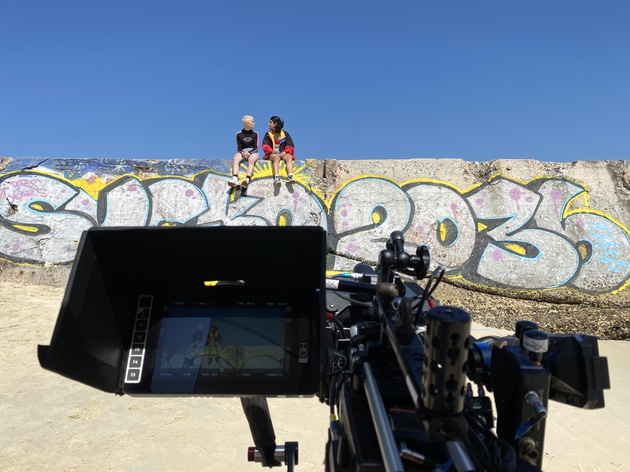

Our conversation turns to the boom of the Australian film industry in recent years. “Personally I think it’s because of the level of filmmakers Australia produces, you look at the list of top cinematographers and there’s always a bunch of Aussies in there and directors and actors. For a smaller population, the fact that Hollywood is full of Aussies speaks volumes.”
And as for some of the creators and filmmakers who English thinks are helping to drive this growth? “I mean, there’s so many. I came up assisting Warwick Thornton and he just continues to amaze me. He just exudes creativity and I just learned so much from him, in both the way he makes movies but also the way he is on set and how relaxed and calm he is – he’s someone I’ve always looked up to. Greig Frasier is absolutely incredible too, bouncing from doing Lion to a Star Wars film in the same year. You couldn’t get two more polar opposite films, and both look stunning for completely different reasons. The way he can dance along the line of making it beautiful but not detracting from the story – he’s incredible. And then the young guns, like my mates Dylan River and Tyson Perkins who just shot Mystery Road. That’s some of the best TV that’s ever come out of Australia. It’s beautiful, it’s new age and it’s the third season of an already standing show, so to do that, it’s just incredible.”
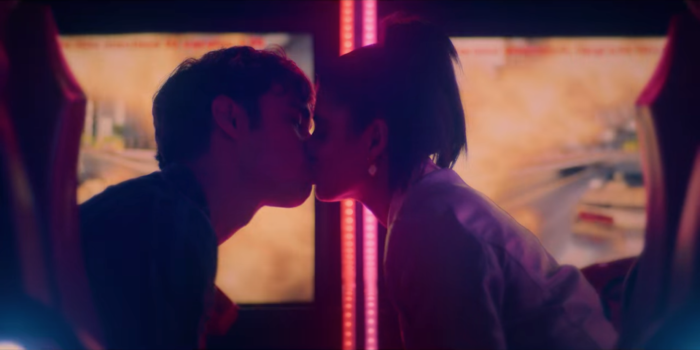
And as for Drew English, what’s next? You’ll have to watch this space. “I’m not sure. I had a few offers after Heartbreak and I wanted to take some time and choose the right job. I definitely don’t want to get pigeonholed to do just TV or just commercials, and that’s the beauty of being a freelancer. So I’ll bounce over and do some commercial stuff and just wait for the right job to come up. I don’t want to be stuck doing a show that I’m not 100% into. I would never do that. I like being able to pick and choose projects and that’s the beauty of being in the industry we’re in, you can do just that. I’m a believer that if you do the same thing all the time it’s a killer of creativity. After all, variety is the spice of life. So we’ll see – your guess is as good as mine.”
-By Katie Martlew
Check out Drew’s profile on Crews to view some of his incredible work here

